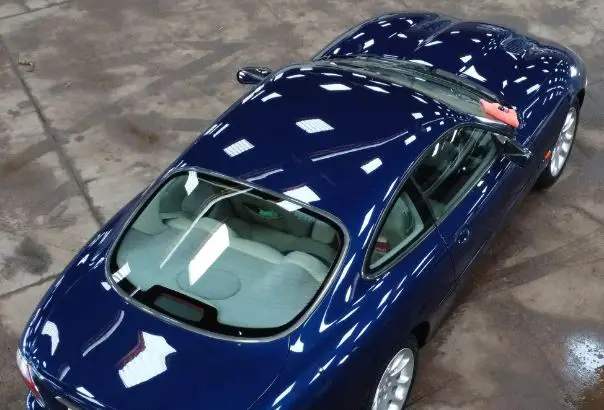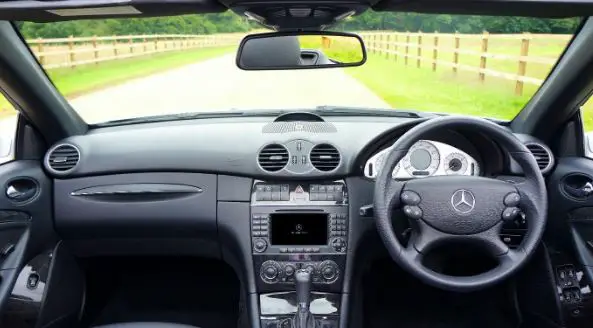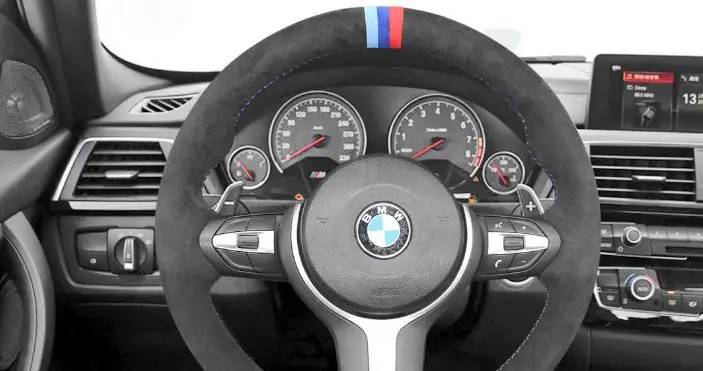On a sun-soaked afternoon in 1996, as the California sun warmed the pavement and the world seemed ablaze with possibilities, I found myself behind the wheel of my newly acquired 1965 Ford Mustang. It was a gem in the rough, its original azure paint shimmering under the radiant sun, embodying the very spirit of freedom and adventure. The Mustang, in all its vintage glory, was a proud testament to my growing love for automobiles, a love I was just beginning to fully grasp.
My name is Timur, now the owner of Gleamworks Detailing in Vancouver. But back then, I was an eager enthusiast in my twenties, hell-bent on preserving the Mustang’s pristine condition. I was well aware that maintaining its charm wasn’t going to be an easy ride. Yet, I was willing to undertake whatever it took to keep that beauty looking as splendid as the day I first laid my eyes on it.
The pursuit of this mission led me to the intricate world of Paint Protection Film (PPF) and Ceramic Coating. These terms were just whispers in the wind at the time, new players in the automotive industry. Fast forward to today, they have grown into significant protective measures for vehicles, essential tools for anyone passionate about maintaining their car’s original gleam.
The journey to understanding PPF and Ceramic Coating was an intriguing one, and I believe it’s a journey worth sharing. So, come along as we unravel the cost differences between these two essential vehicle protection measures, diving deep into the details, and guiding you to make an informed decision for your own uncut gem.
Ceramic coating, a marvel in car care technology, extends a car’s life by offering a protective shield against external damage. This transparent, second skin preserves the vehicle’s original paint, making it resistant to UV rays, chemical stains, and weathering. Imagine an invisible knight in shining armor, if you will, guarding your beloved chariot against the assaults of time and environment.
Understanding the costs associated with ceramic coating, however, can be a tad complex. Various factors interplay in this narrative of protection, influencing the overall price you pay for that invaluable shield.
Factors Influencing Ceramic Coating Costs
Indeed, the costs of ceramic coating can vary quite dramatically depending on several elements. These factors work much like the wheels of a vehicle, each playing its role in driving the overall cost. Let’s take a more detailed ride through these variables.
Type of Ceramic Coating
The world of ceramic coatings is rather diverse, with each type carrying its distinct attributes and corresponding costs. At the high end, you have nano-ceramic coatings. These consist of tiny particles, some even as small as a billionth of a meter (hence the term ‘nano’). These particles form a tighter bond, providing excellent durability and a high-gloss finish, making your car look like it just rolled off the showroom floor, much like my grandfather’s treasured Galaxie in its prime. However, this increased protection and appeal comes with a higher price tag.
On the other end of the spectrum, you have hybrid ceramic coatings. These are essentially a mix of ceramic and wax or sealant compounds. While they might not provide the same level of protection as the nano-coatings, they are more budget-friendly and can be a good stepping stone for those new to the world of ceramic coatings.
Vehicle Size
The size of your vehicle plays an undeniable role in the overall cost of ceramic coating. Much like painting a canvas, the larger the surface area, the more materials you require. Therefore, coating a larger vehicle such as an SUV or a pickup truck would require more ceramic coating than a compact car or a sedan. This higher material requirement equates to a higher overall cost.
Professional vs. DIY
There’s always been a certain charm to doing things yourself. I recall my grandfather under the hood of his Ford, a gleam in his eye and a wrench in his hand. In the world of ceramic coatings, opting for a DIY approach can indeed be a cost-saver. DIY ceramic coating kits are available in the market at a fraction of the professional service cost.
However, remember, applying ceramic coating requires a certain level of expertise. Professionals spend years honing their skills to ensure a smooth, even application that lasts. Their experience often translates into superior results. But as with most things of quality, this comes with a higher cost. Balancing between the desire to save money and the need for a quality job can tip the scale in either direction.
Geographic Location
In the world of real estate, it’s all about “location, location, location.” The same holds surprisingly true for ceramic coating costs as well. Geographic location can affect labor costs, operating expenses, and the overall market rate in the area, all of which influence the final price you pay.
If you’re living in a bustling city with high living costs like San Francisco or New York, expect to pay more for ceramic coating services than if you’re in a rural town in Nebraska. While this might seem unfair, remember that businesses in high-cost areas also have higher expenses, which they need to cover.
Taking these factors into account, it’s clear to see that the cost of ceramic coating isn’t a simple, flat-rate figure. It’s a complex interplay of elements that, when understood, can guide you to make a decision that balances both your budget and your vehicle protection needs.
Cost for Different Types of Vehicles
The type and size of your vehicle play significant roles in determining the average cost of ceramic coating.
Compact Cars and Sedans
For compact cars and sedans, which have a smaller surface area to cover, the cost is relatively lower. On average, for a professional nano-ceramic coating job, you might expect to pay anywhere between $500 to $1,000.
SUVs and Trucks
Moving on to larger vehicles such as SUVs and pickup trucks, the price rises in correspondence with the increased surface area. For these vehicles, professional ceramic coating services can range from approximately $1,000 to $2,000.
Additional Costs
Now, it’s crucial to remember that the figures mentioned above cover the application of the ceramic coating itself. However, before the ceramic coating can be applied, the vehicle’s surface needs to be perfectly clean and as defect-free as possible. This requires additional steps, each carrying its own cost.
Car Washing and Decontamination
The first step in this process is a thorough wash and decontamination of the vehicle’s surface to remove any dirt, grime, or contaminants that could affect the ceramic coating’s adherence and performance. This step could cost you anywhere from $25 to $50 if you decide to go for a professional service.
Paint Correction
Next comes paint correction. This step involves the removal of any swirls, scratches, or oxidation from the paintwork. This process ensures a smooth and flawless surface for the ceramic coating to bond to, thus enhancing the final results. Professional paint correction services can range from $100 to $1,000, depending on the condition of your vehicle’s paint and the complexity of the job.
Ceramic Coating Maintenance
Finally, don’t forget about maintenance. While ceramic coatings are significantly more durable and long-lasting than traditional waxes or sealants, they still require proper maintenance to maximize their performance and longevity. This may involve using specific washing techniques or special aftercare products, which can add to the overall cost over time.
In sum, while the initial outlay for ceramic coating can seem steep, remember that it’s not just a cost—it’s an investment. An investment in the protection, aesthetic appeal, and potentially even the resale value of your vehicle. The average costs outlined above can give you a ballpark figure, but the final price will always depend on your specific circumstances, vehicle, and choices.
Cost-effectiveness of Ceramic Coating
Unraveling the cost-effectiveness of ceramic coating can seem like a daunting task, but with a closer look, we can reveal its true value. There are several elements to consider when weighing its cost-effectiveness: the durability, the protection it offers, the potential for increased resale value, and the aesthetics.
Durability: A Long-lasting Solution
Ceramic coating is not your average car wax or paint sealant. This advanced technology offers longevity that outshines its competitors. A high-quality professional ceramic coating can last anywhere from 2 to 5 years, and in some cases even longer, depending on the coating type, quality of application, and how well it is maintained. Compare this with a traditional car wax that typically lasts a few weeks to a few months, and the cost-effectiveness of ceramic coating begins to shine.
Protection: A Guard Against the Elements
Think back to the joy you felt when you first bought your vehicle. The shine, the gloss, the way it gleamed under the sunlight—wouldn’t it be wonderful to maintain that appeal over the years? That’s precisely what ceramic coating offers. It forms a protective layer on your car’s surface, guarding it against UV rays, bird droppings, chemical stains, and even light scratches. By preventing these damages, ceramic coating saves you future repair costs, adding to its cost-effectiveness.
Resale Value: Keeping Your Car in Prime Condition
Let’s face it; a well-maintained, shiny car is more appealing to potential buyers than a dull, faded one. By preserving your car’s aesthetics, ceramic coating could enhance its resale value. While it may not increase the value by the amount you spent on the coating, the faster sale time and broader pool of interested buyers could balance the scales in terms of cost-effectiveness.
Aesthetics: Maintaining that Showroom Shine
Last but certainly not least, let’s talk about aesthetics. Ceramic coating gives your vehicle that ‘just waxed’ gloss, maintaining its pristine appearance for years. This visual appeal, while not necessarily translating directly into dollars and cents, adds to the overall satisfaction and pride of car ownership. And really, who can put a price tag on the joy of seeing their vehicle shine like new, day in and day out?
As we dive deeper into the cost-effectiveness of ceramic coating, we begin to see its true worth. While the upfront costs might seem high, the long-term benefits—durability, protection, potential increased resale value, and aesthetics—make ceramic coating a cost-effective solution for many. Just like my grandfather used to say about his cherished Ford Galaxie, “Investing in protection is cheaper than paying for repairs.”
Budget-friendly Alternatives to Ceramic Coating
If the costs associated with ceramic coating seem a touch too steep, or you’re just starting your journey into the world of vehicle protection and aren’t ready to make such a substantial commitment, there are budget-friendly alternatives that can still offer a good level of protection for your car’s surface. Let’s explore some of these options.
Car Wax
A classic go-to in car care, car wax is a tried-and-true solution that adds a layer of protection to your vehicle’s paintwork. Made from a blend of natural waxes, solvents, and oils, it can offer your vehicle a radiant shine and decent protection against light scratches, water, and dirt.
Wax doesn’t have the longevity of ceramic coating—typically lasting a few weeks to a couple of months depending on the environment and care taken—but it is significantly cheaper. A quality car wax can cost anywhere from $10 to $50, and applying it can be a satisfying, if not somewhat labor-intensive, DIY project.
Paint Sealants
Think of paint sealants as a step up from car wax. These synthetic products offer a longer-lasting finish, usually about 6 to 12 months, and better protection against UV rays and environmental contaminants. They are also easier to apply compared to waxes.
Sealants don’t quite offer the same depth of shine as a high-quality carnauba wax or the level of protection you’d get from a ceramic coating. However, with prices ranging from $20 to $80, they represent a solid middle-ground solution.
Hybrid Ceramic Sprays
These products represent a fusion of traditional waxes or sealants with ceramic technology. Hybrid ceramic sprays are user-friendly and offer better protection and longevity than a traditional wax or sealant, though they don’t quite match up to a full ceramic coating.
Hybrid ceramic sprays can last up to a year and are simple to apply. They provide a high-gloss finish and a good level of protection against water, dirt, and UV rays. With prices ranging from $15 to $50, they offer a taste of ceramic coating benefits at a fraction of the cost.
Remember, though, that while these alternatives do offer some protection and shine, none can truly match the durability, protective qualities, and glossy finish of a professional ceramic coating. It’s always essential to weigh up the cost savings against the benefits received.
As my grandmother used to say, “Sometimes the cheaper shoes end up costing you more if they fall apart and you have to replace them.” This wisdom applies to vehicle protection too. However, for those on a tight budget or new to car care, these alternatives can be a great starting point.











